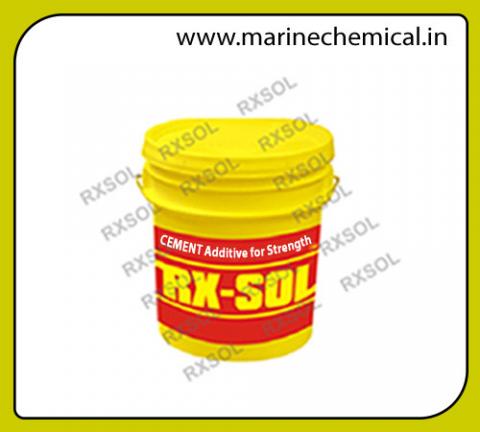
CEMENT Additive for Strength
Product Qty Per Unit:
0.00
Product usage unit:
Box
Product Delivery Locations:
Mumbai, JNPT, Nhava Seva, Pirpav Jetty, Ballard Pier, Mumbai Port Trust, Butcher Island, ONGC EMR Shed, MIdc, Pune, Maharastra
Generic Name:
SKU:
RXSOL-67-6701-020 CEMENT Additive for Strength
Product Description:
It is used as an ingredient in cement in which it retards (to make slow, to delay) the setting of the mixture and improves its density and texture.
Product Application:
Product Procedure:
Product Note:
Product Technical Specification:
Product pack size:
Product alias:
CEMENT Additive for Strength manufacturer supplier distributor in Mumbai, Kandla, Kolkata, Vizag, Chennai, India, Fujairah, Dubai UAE, Muscat Oman, Kenya Africa. Get the best quality of CEMENT Additive for Strength at a competitive price from us. We have ready stock of CEMENT Additive for Strength in India, UAE Gulf, Oman, Kenya Africa. Contact us for bulk as well as small orders.
Remarks:
Calcium chloride can be used to accelerate strength development in mass concrete during winter.
Plasticizers - Water-reducing admixture : ( The commonly used admixtures are Ligno-sulphonates and hydrocarbolic acid salts. )
To achieve a higher strength by decreasing the water-cement ratio at the same workability as an admixture free mix.
Water reduction of more than 5% but less than 12%
Plasticizers are usually based on lignosulphonate, which is a natural polymer, derived from wood processing in the paper industry.
lignosulphonate works as lubricator in concrete as it works as surface active agents which alter the physic-chemical forces at the interface. They are adsorbed on the cement particles, giving them a Negative Charge which leads to repulsion between the particles. Electrostatic forces are developed causing disintegration and the free water become available for workability, thus they lubricate the mix reducing the friction and increasing the workability.
lignosulphonate works as a retarder by forming a thin layer over the cement particles protecting them from hydration and increasing the setting time. Most normal plasticizers give some retardation, 30–90 minutes
Super Plasticizers :
Increased fluidity, Flowing, Self-leveling, Self-compacting concrete, Penetration and compaction round dense reinforcement, Reduced W/C ratio.
Also resulting
Very high early strength, >200% at 24 hours or earlier
Very high later age strengths, >100 MPa or 15000 psi.
Reduced shrinkage, especially if combined with reduced cement content.
Improved durability by removing water to reduce permeability and diffusion.
Increased fluidity, Flowing, Self-leveling, Self-compacting concrete, Penetration and compaction round dense reinforcement, Reduced W/C ratio.
Also resulting
Very high early strength, >200% at 24 hours or earlier
Very high later age strengths, >100 MPa or 15000 psi.
Reduced shrinkage, especially if combined with reduced cement content.
Improved durability by removing water to reduce permeability and diffusion.
superplasticizers also resulting as high range water reducing agent.
Most Common superplasticizers -
Most Common superplasticizers -
Sulphonated Melamine Formaldehyde condensates (SMF) :
1.Colourless - No Staining most common superplasticizer where Finishing appearance matters, especially for WHITE CEMENT. Therefore SMF used where appearance is important.
2. SMF gives 16–25%+ water reduction in cement admixture.
3. Sulphonated Melamine Formaldehyde condensates (SMF) very effective at low temperatures especially where early strength is most critical. However, at higher temperatures, they lose workability relatively quickly.
Sulphonated Naphthalene formaldehyde condensates (SNF)
1.
2. SMF gives 16–25%+ water reduction in cement admixture.
3. Sulphonated Melamine Formaldehyde condensates (SMF) very effective at low temperatures especially where early strength is most critical. However, at higher temperatures, they lose workability relatively quickly.
Sulphonated Naphthalene formaldehyde condensates (SNF)
1. Brown in colour
2. SNF gives 16–25%+ water reduction.
3. SNF improve cohesion.
4. SNFhave more Retardation effect than SMF but will still not normally exceed 90 minutes. 5. SNF is a very cost-effective.
Polycarboxylate ether superplasticizers (PCE)
3. SNF improve cohesion.
4. SNF
Polycarboxylate ether superplasticizers (PCE)
1. High molecular weight polymer liquid, Appearance: Yellowish brown liquid. pH value: 6.5-7.5
2. PCE gives 20–35%+ water reduction.
3. PCEare relatively expensive per liter but are very powerful so a lower dose (or more dilute solution) is normally used.
3. PCE
4. Why PCE is better : PCE do not lower the surface tension of the water due to that possible undesirable side effects are reduced.
Retarders: Helpful for concrete that has to be transported to long distance, and helpful in placing the concrete at high temperatures.
1. The retarder is to delay or extend the setting time of cement paste in concrete.
After addition ofwater cement starts hydrates typically in 2–3 hours. Which is called the dormant period when the concrete is plastic and can be placed. At the end of the dormant period, the hydration rate increases and a lot of calcium silicate hydrate and calcium hydroxide is formed relatively quickly. If Retarder is added in mixturer Retarding admixtures delay the end of the dormant period and the start of setting and hardening.
2. Uses of Retarder helps to allow later vibration of the concrete to prevent the formation of cold joints between layers of concrete placed with a significant delay between them. And retarder gives workability retention forlong period of time.
3. Retardermechanism : Anions molecules are absorbed on the surface of cement particles, which hinders further reactions between cement and water i.e. retards setting.
4. The commonly known retards are Calcium Ligno-sulphonates and Carbohydrates derivatives ( SUGAR ) usedin fraction of percent by weight of cement.
After addition of
2. Uses of Retarder helps to allow later vibration of the concrete to prevent the formation of cold joints between layers of concrete placed with a significant delay between them. And retarder gives workability retention for
3. Retarder
4. The commonly known retards are Calcium Ligno-sulphonates and Carbohydrates derivatives ( SUGAR ) used




